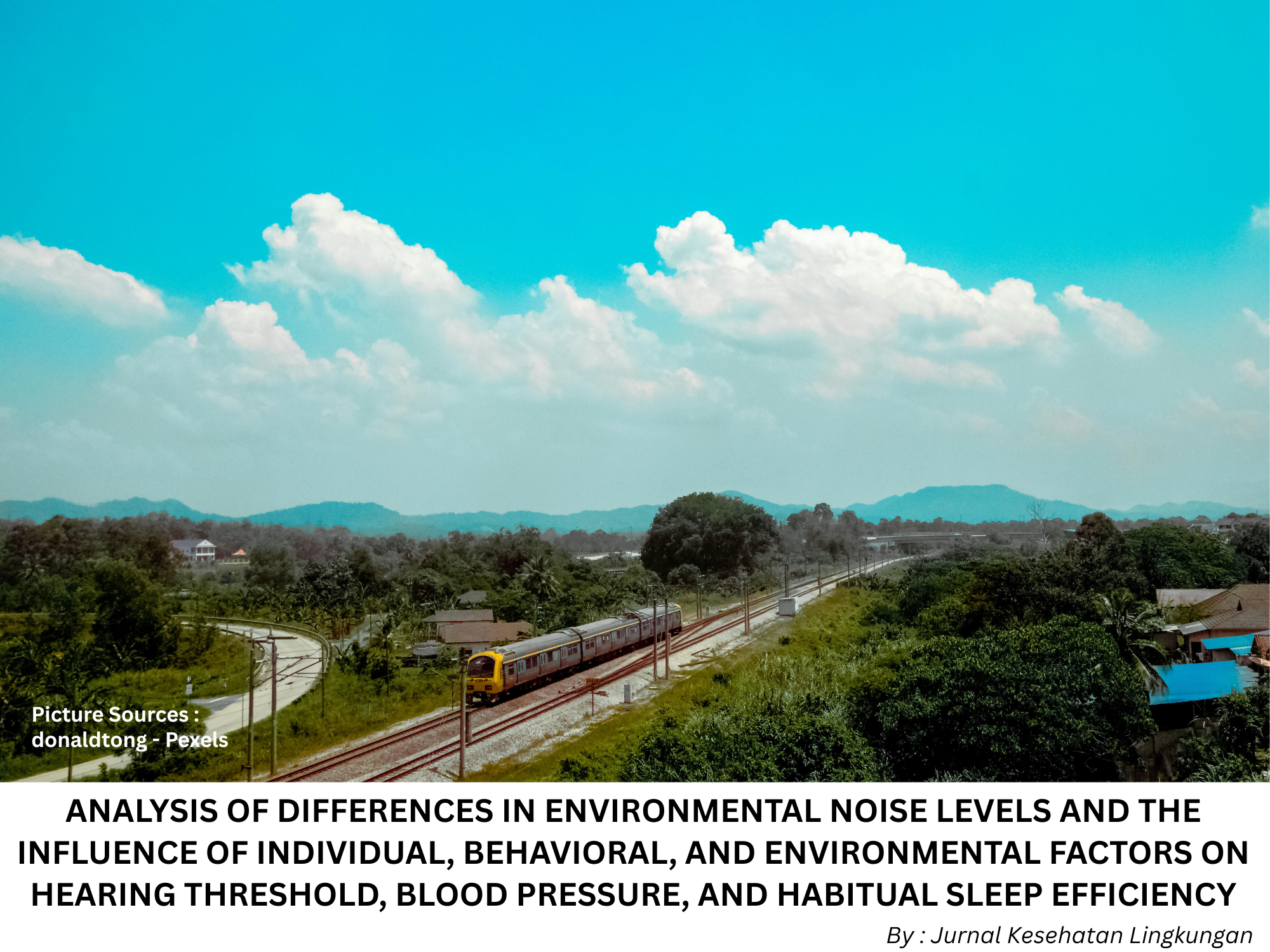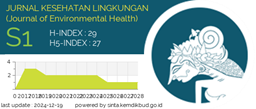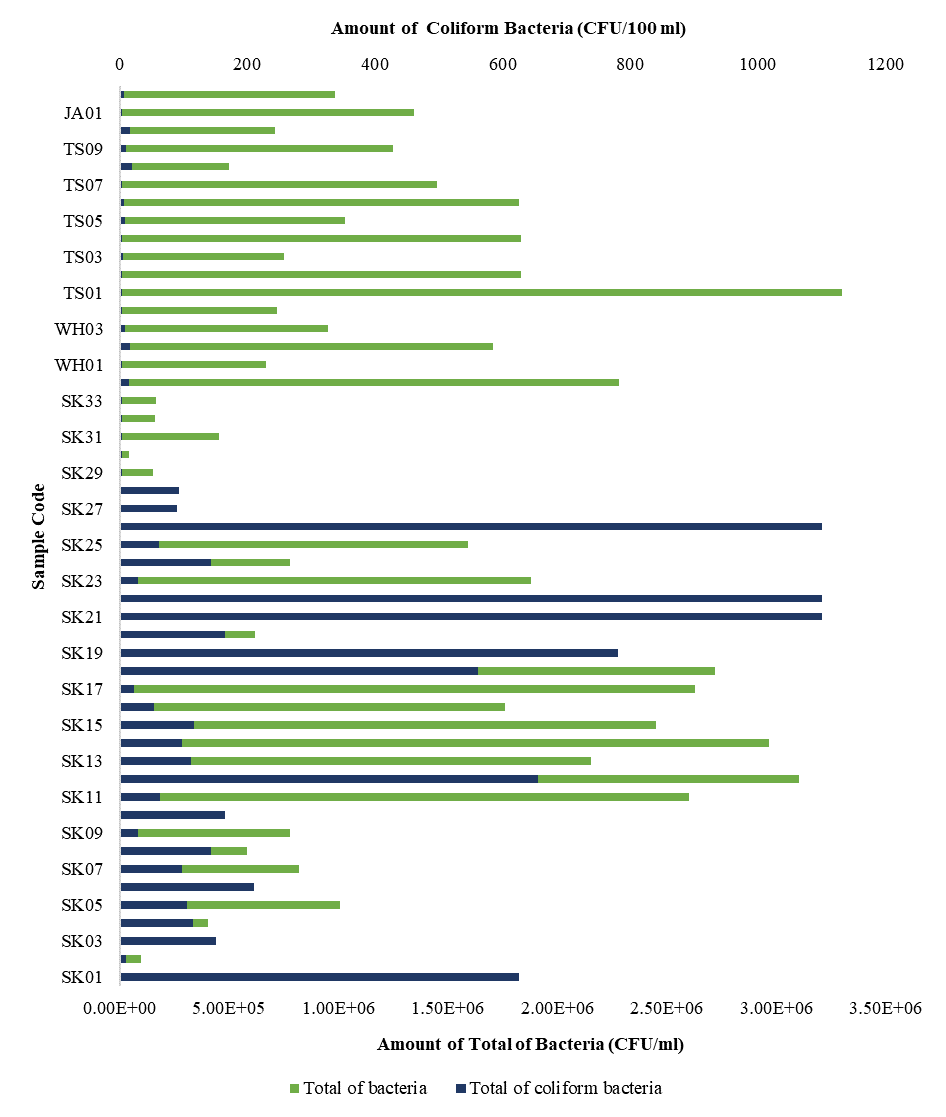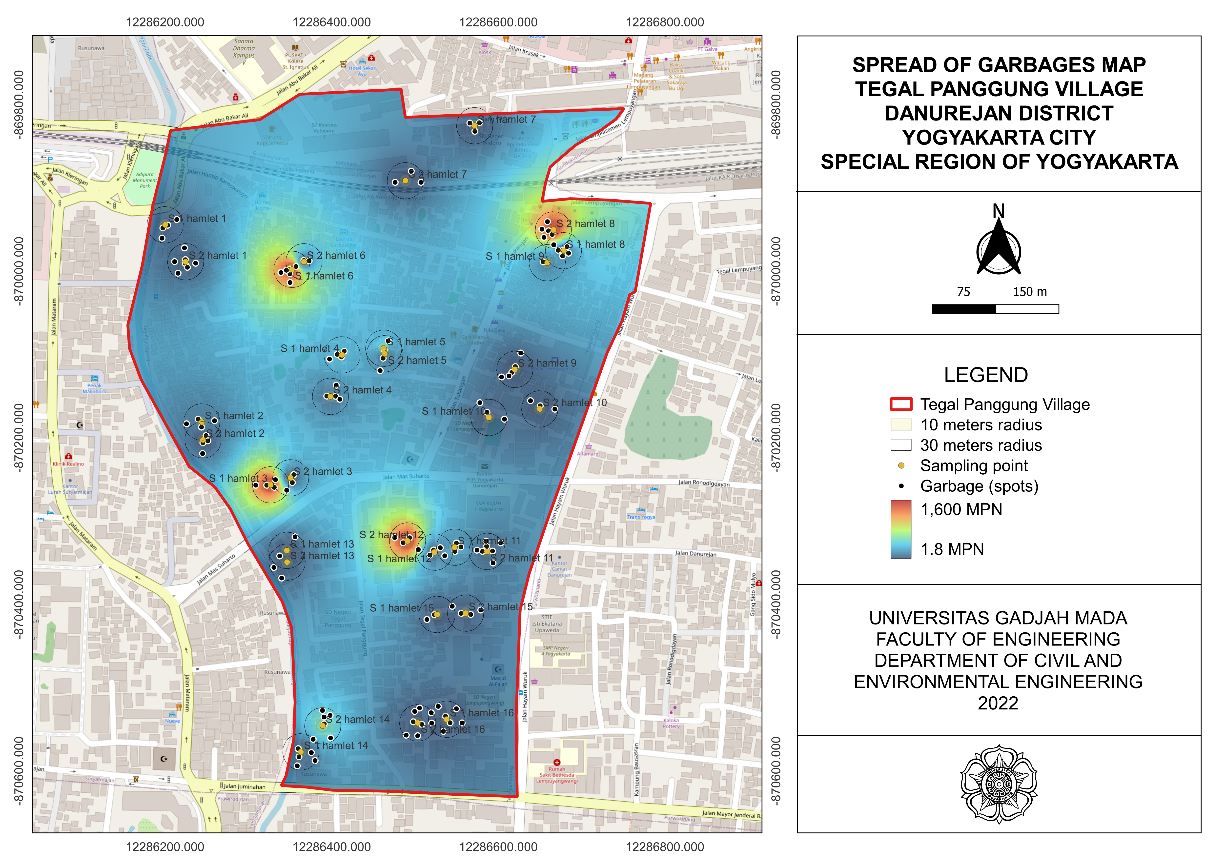Analysis of Differences in Environmental Noise Levels and the Influence of Individual, Behavioral, and Environmental Factors on Hearing Threshold, Blood Pressure, and Habitual Sleep Efficiency

Downloads
Introduction: Environmental noise from transportation, especially railways, is a form of sound pollution that affects health both auditorily and non-auditorily. Homemakers, who spend most of their time at home, are particularly vulnerable to noise exposure. This study aimed to analyze differences in hearing thresholds, blood pressure, and habitual sleep efficiency among homemakers residing in areas with varying noise levels, as well as contributing individual, behavioral, and environmental factors. Methods: This was an analytical observational study with a cross-sectional design involving 60 housewives—30 from a noise-exposed area (Ambengan Selatan Karya) and 30 from a quieter area (Rusunawa Wonorejo). Data were collected through noise measurements using a Sound Level Meter, audiometric tests, blood pressure measurements, and questionnaires inspired by the Pittsburgh Sleep Quality Index (PSQI). Statistical analyses included the Independent T-Test to analyze the differences in environmental noise level, the Mann-Whitney test to analyze the differences of each dependent variable, and the chi-squared test to analyze the influences. Results and Discussion: Significant differences were found in environmental noise levels (p=0.021), right ear hearing thresholds (p=0.039), blood pressure (p=0.007), and sleep efficiency (p=0.040). No significant difference was observed in left ear hearing thresholds. Factors influencing right ear hearing thresholds included age and earphone use, age influenced blood pressure, while physical barriers affected sleep efficiency. Conclusion: High exposure to environmental noise may increase the risk of hearing loss, hypertension, and sleep disturbances.
Badan Pusat Statistik. Berita Resmi Statistik No. 90/12/Th. XXVII, 2 Desember 2024. 2024.
Hijriah, Hidayat A, Bungin ER, Muliawan IW, Masgode MB, Rachman RM, et al. Polusi dan Lingkungan. Tohar Media; 2023. https://books.google.co.id/books?id=Rc3MEAAAQBAJ
European Environment Agency (EEA). Outlook to 2030 — Can the number of people affected by transport noise be cut by 30%. 2022.https://www.eea.europa.eu/publications/outlook-to-2030/outlook-to-2030-can-the
Handayani D, Ubaidillah, Sabtya AMN. Karakteristik Tingkat Kebisingan Akibat Aktivitas Kereta Api di Pemukiman (Studi Kasus: Jl. Cimanuk II-Jebres-Surakarta). Matriks Teknik Sipil. 2023;11(4):442-448. https://doi.org/10.20961/mateksi.v11i4.76236
Pratiwi D, Ubaidi B, Dewantoro F, Yakub VK, Widodo A. Analisis Kebisingan Lingkungan pada Lintasan Kereta (Study kasus: Jalur Kereta di Kelurahan Rejomulyo Kedaton). Journal of Infrastructural in Civil Engineering (JICE). 2022;3(2):18-24. https://doi.org/10.33365/jice.v3i02.2153
Mehrotra A, Shukla SP, Shukla AK, Manar MK, Singh SK, Mehrotra M. A Comprehensive Review of Auditory and Non-Auditory Effects of Noise on Human Health. Noise and Health. 2024;26(121):59–69. https://doi.org/10.4103/nah.nah_124_23
Krisnanti KE. Analisis Pengaruh Intensitas Kebisingan Kereta Api terhadap Efek Auditori dan Non Auditori (Studi pada Ibu Rumah Tangga di Pemukiman Kelurahan Sukosari Madiun). Skripsi. Surabaya: Universitas Airlangga. 2019. https://repository.unair.ac.id/90077/
Widyatmoko V, Anisa R, Duhitatrissari P. Efek Polusi Bising Kereta Api Terhadap Pendengaran Penduduk di Pinggiran Rel Kelurahan Jodipan, Kota Malang. Jurnal Kedokteran Komunitas. 2023;11(1):1-11. https://jim.unisma.ac.id/index.php/jkkfk/article/view/20632
Syarifah N, Septiawati D. Analisis Hubungan Antara Intensitas Kebisingan dengan Kejadian Hipertensi pada Masyarakat di Pemukiman Kelurahan 26 Ilir Kecamatan Bukit Kecil Kota Palembang. Skripsi. Indralaya: Universitas Sriwijaya.2021. https://doi.org/10.31237/osf.io/yd39t
Suryani NDI. Analisis Pengaruh Tingkat Kebisingan dan Getaran Kereta Api terhadap Tekanan Darah Ibu Rumah Tangga di Pemukiman Pinggiran Rel Kereta Api Jalan Ambengan Surabaya. Skripsi. Surabaya: Universitas Airlangga. 2018. https://repository.unair.ac.id/23891/13/FULLTEXT.pdf
Kementerian Perhubungan. Keputusan Direktur Jenderal Perkeretaapian Nomor 224 Tahun 2024 tentang Grafik Perjalanan Kereta Api pada Jaringan Jalur Kereta Api Nasional di Jawa Tahun 2025. Jakarta: Kementerian Perhubungan Indonesia. 2025.
Bahfein S, Alxander H. Pasar Senen Jadi Stasiun KA Terpadat Sepanjang 2024. 2024. https://www.kompas.com/properti/read/2024/11/14/123000521/pasar-senen-jadi-stasiun-ka-terpadat-sepanjang-2024
Zhou B, Lan Y, Bi Y, Li C, Zhang X, Wu X. Relationship Between Occupational Noise and Hypertension in Modern Enterprise Workers: A Case-Control Study. International Journal of Public Health. 2022;67(1604997):1-9. https://doi.org/10.3389/ijph.2022.1604997
Kantu AS, Jusuf H, Prasetya E. Tingkat Kebisingan, Durasi Kerja, dan Masa Kerja dengan Keluhan Gangguan Pendengaran pada Pekerja di KMP Moinit Pelabuhan Penyebrangan Gorontalo. Public Health and Surveilance Review. 2022;1(1):1-10. https://ejurnal.ung.ac.id/index.php/phsr/index
Suryaningsih M, Armiyati Y. Penurunan Tekanan Darah pada Pasien Usia Lanjut Menggunakan Terapi Musik. Ners Muda. 2021;2(2):53-59. https://doi.org/10.26714/nm.v2i2.6301
Kementerian Pemukiman dan Prasarana Wilayah. Pedoman Konstruksi Bangunan: Prediksi Kebisingan Akibat Lalu Lintas. Jakarta: Kementerian Pemukiman dan Prasarana Wilayah. 2004.
Saha P, Monir MU, Sarkar SM, Aziz AA. Noise Pollution From Oil, Gas, and Petrochemical Industries. Crises in Oil, Gas and Petrochemical Industries. 2023;1;419–434. https://doi.org/10.1016/B978-0-323-95154-8.00012-8
Syahputri RA, Damianto B. Effects of Railway Noise on Residents’ in A Residential Area. Applied Research on Civil Engineering and Environment (ARCEE). 2021;3(1):17–28. https://doi.org/10.32722/arcee.v3i01.3687
Krismayanti FA, Salim ATA, Rezika WY, Suyatno S, Nurdiansyah RT, Apriliani NF. Analisis Persebaran Tingkat Kebisingan Kereta Api di Rel Double Track Winongo Kota Madiun. Jurnal Perkeretaapian Indonesia (Indonesian Railway Journal). 2022;6(2):26–31. https://doi.org/10.37367/jpi.v6i2.216
Peraturan Pemerintah. Peraturan Pemerintah Republik Indonesia Nomor 56 Tahun 2009 Tentang Penyelenggaraan Perkeretaapian. Jakarta: Peraturan Pemerintah. 2009.
The Government of The Hong Kong Special Administrative Region Planning Department. Hong Kong Planning Standards and Guidelines Chapter 9 Environment. 2014.
Kumar BS, Chowdary V. Use of Artificial Neural Networks to Assess Train Horn Noise at a Railway Level Crossing in India. Environ Monit Assess. 2023 2025;195(3):1–19. https://doi.org/10.1007/s10661-023-11021-2
Al-Amin R, Ikhwanuddin I, Judiono J. Pengaruh Volume Lalulintas Terhadap Tingkat Kebisingan (Studi Kasus Jalan Ahmad Yani Surabaya). Basement : Jurnal Teknik Sipil. 2024;2(2):127–131. https://doi.org/10.36873/basement.v2i2.14828
Rahmanita F. Prototipe Pengukuran Tingkat Kebisingan dan Kelembapan pada Jalan Raya Surabaya Berbasis Arduino Uno. Inovasi Fisika Indonesia. 2023;12(3):87–93. https://doi.org/10.26740/ifi.v12n3.p87-93
Nurizati N, Sumardi T, Robiyana I. Analisis Pengukuran Taraf Intensitas Bunyi Pengeras Suara Masjid Menggunakan Aplikasi Sound Level Meter. Jurnal Riset Fisika Indonesia 2024;5(1):46–51. https://doi.org/10.33019/jrfi.v5i1.5583
Laxmi V, Thakre C, Vijay R. Evaluation of Noise Barriers Based on Geometries and Materials: A Review. Environmental Science and Pollution Research. 2022;29(2):1729–1745. https://doi.org/10.1007/s11356-021-16944-2
Pallunan TAP, Suoth VA, Tongkukut SHJ. Analisis Material Peredam Kebisingan dalam Kereta di PT. Industri Kereta Api Madiun Jawa Timur Menggunakan Perangkat Lunak AFMG SoundFlow. Jurnal MIPA. 2024;13(2):48–52. https://doi.org/10.35799/jm.v13i2.55376
Febrianti DE, Agus Salim AT, Rezika WY, Annas MA, Suyatno S. Effectiveness of Noise Barriers Based on Waste Materials in Case Study of Residential Noise Due to Double-Track Railways. Journal of Physics and Its Applications. 2023;6(1):18–23. https://doi.org/10.14710/jpa.v6i1.19992
Handayani D, Hartono W, Nuha Fadhilah S. Potensi Aplikasi Bambu Sebagai Bahan Peredam Kebisingan Operasional Kereta Api dengan Menggunakan Model Kristal Sonik Persegi. MoDuluS Media Komunikasi Dunia Ilmu Sipil. 2024;6(1):44-52. https://doi.org/10.32585/modulus.v6i1.5530
Ayumna H. Efektivitas Jalur Hijau dalam Mengurangi Kebisingan di Permukiman Sekitar Jalur Kereta Rel Listrik. Skripsi. Bogor: Institut Pertanian Bogor. 2021. https://doi.org/10.31237/osf.io/uq5f4
Rahma SL. Analisis Kebisingan Akibat Perlintasan Kereta Api di Area Pemukiman. Tesis. Surabaya: Institut Teknologi Sepuluh Nopember. 2020. https://repository.its.ac.id/78719/
Ramadhani PN, Firdausiana YD. Paparan Kebisingan dan Gangguan Pendengaran pada Operator Lapangan Area Compressor House. Jurnal Kesehatan Lingkungan. 2020;12(2):126–135. https://doi.org/10.20473/jkl.v12i2.2020.126-135
Genitsaridi E, Kypraios T, Edvall NK, Trpchevska N, Canlon B, Hoare DJ, et al. The Spatial Percept of Tinnitus is Associated with Hearing Asymmetry: Subgroup Comparisons. Prog Brain Res. 2021;263:59–80. https://doi.org/10.1016/bs.pbr.2021.04.006
Ferial L, Fitria L, Wulandari RA. Hubungan Tingkat Kebisingan dengan Gangguan Pendengaran Penduduk di Sekitar Terminal Pakupatan. Faletehan Health Journal. 2022;9(1):13–19. https://doi.org/10.33746/fhj.v9i01.311
Natarajan N, Batts S, Stankovic KM. Noise-Induced Hearing Loss. Journal of Clinical Medicine. 2023;12(6):1-34. https://doi.org/10.3390/jcm12062347
Thapa MR. Analyzing Sensorineural Hearing Loss Among Family Members of Railway Workers Living Near Railway Tracks: A Case Study Introduction. Healthcare Service Journal. 2024;1(1): 48-66. https://healthcareservicejournal.com/wp-content/uploads/2024/05/railway-hearing.pdf
Aurolia PA, Yahya A, Duhitatrissari FP. Hubungan Paparan Bising Akibat Kereta Api Terhadap Tinitus pada Penduduk di Sekitar Rel Jodipan Malang. Journal of Community Medicine. 2023;11(1):1-8. https://jim.unisma.ac.id/index.php/jkkfk/article/view/20631
Yang W, Zhao X, Chai R, Fan J. Progress on Mechanisms of Age-Related Hearing Loss. Front Neurosci. 2023;17(1253574):1-8. https://doi.org/10.3389/fnins.2023.1253574
Slade K, Plack CJ, Nuttall HE. The Effects of Age-Related Hearing Loss on the Brain and Cognitive Function. Trends Neurosci. 2020;43(10):810–821. https://doi.org/10.1016/j.tins.2020.07.005
American Heart Association. High Blood Pressure Guidelines. American;2017. https://www.heart.org/-/media/files/health-topics/high-blood-pressure/hypertension-guideline-highlights-flyer.pdf
Huang J, Yang T, Gulliver J, Hansell AL, Mamouei M, Cai YS, et al. Road Traffic Noise and Incidence of Primary Hypertension: A Prospective Analysis in UK Biobank. JACC: Advances. 2023;2(2):1-12. https://doi.org/10.1016/j.jacadv.2023.100262
Yaghoubi K, Alimohammadi I, Abolghasemi J, Shirin Shandiz M, Aboutaleb N, Ashtarinezhad A. The Effect of Occupational Noise Exposure on Systolic Blood Pressure, Diastolic Blood Pressure and Salivary Cortisol Level Among Automotive Assembly Workers. International Journal of Occupational Safety and Ergonomics. 2021;27(1):8–13. https://doi.org/10.1080/10803548.2018.1510608
Petri D, Licitra G, Vigotti MA, Fredianelli L. Effects of Exposure to Road, Railway, Airport and Recreational Noise on Blood Pressure and Hypertension. International Journal of Environmental Research and Public Health. 2021;18(17):1-15. https://doi.org/10.3390/ijerph18179145
Münzel T, Molitor M, Kuntic M, Hahad O, Röösli M, Engelmann N, et al. Transportation Noise Pollution and Cardiovascular Health. Circ Res. 2024;134(9):1113–1135. https://doi.org/10.1161/CIRCRESAHA.123.323584
Cheng W, Du Y, Zhang Q, Wang X, He C, He J, et al. Age-related Changes in the Risk of High Blood Pressure. Front Cardiovasc Med. 2022;9:1-13. https://doi.org/10.3389/fcvm.2022.939103
Cheng W, Du Y, Zhang Q, Wang X, He C, He J, et al. Age-Related Changes in the Risk of High Blood Pressure. Front Cardiovasc Med. 2022;9:1-13. https://doi.org/10.3389/fcvm.2022.939103
Golbus JR, Pescatore NA, Nallamothu BK, Shah N, Kheterpal S. Wearable Device Signals and Home Blood Pressure Data Across Age, Sex, Race, Ethnicity, and Clinical Phenotypes in the Michigan Predictive Activity & Clinical Trajectories in Health (MIPACT) Study: A Prospective, Community-Based Observational Study. Lancet Digit Health. 2021;3(11):707–715. https://doi.org/10.1016/S2589-7500(21)00138-2
Buysse DJ, Reynolds CF, Monk TH, Berman SR, Kupfer DJ. The Pittsburgh Sleep Quality Index: A New Instrument for Psychiatric Practice and Research. Psychiatry Res. 1989;28(2):193–213. https://doi.org/10.1016/0165-1781(89)90047-4
Röösli M, Brink M, Rudzik F, Cajochen C, Ragettli MS, Flückiger B, et al. Associations of Various Nighttime Noise Exposure Indicators with Objective Sleep Efficiency and Self-Reported Sleep Quality: A Field Study. International Journal of Environmental Research and Public Health. 2019;16(20):1-19. https://doi.org/10.3390/ijerph16203790
Smith MG, Cordoza M, Basner M. Environmental Noise and Effects on Sleep: An Update to the WHO Systematic Review and Meta-Analysis. Environ Health Perspect. 2022;130(7):1-23. https://doi.org/10.1289/EHP10197
Lechat B, Hansen K, Micic G, Decup F, Dunbar C, Liebich T, et al. K-Complexes Are a Sensitive Marker of Noise-Related Sensory Processing During Sleep: A Pilot Study. Sleep Research Society. 2021;44(9):1-10. https://doi.org/10.1093/sleep/zsab065
Lechat B, Scott H, Decup F, Hansen KL, Micic G, Dunbar C, et al. Environmental Noise-Induced Cardiovascular Responses During Sleep. Sleep Research Society. 2022;45(3):1-10. https://doi.org/10.1093/sleep/zsab302
Foo CT, O’Driscoll DM, Ogeil RP, Lubman D, Young AC. Barriers to Sleep in Acute Hospital Settings. Sleep and Breathing. 2022;26(2):855–863. https://doi.org/10.1007/s11325-021-02415-y
Mori C, Boss K, Indermuhle P, Stahl E, Chiu SH, Shanks L. Is it Noise? Factors Linked with Sleep Interruption in Hospitalized Patients. Clinical Nurse Specialist. 2021;35(4):199–207. https://doi.org/10.1097/NUR.0000000000000606
Chen B, Zhu X. Impacts of Different Noise Environments on Polysomnographic Monitoring Parameters and Sleep Quality Among Hospitalized Patients. Noise Health. 2024;26(121):114–119. https://doi.org/10.4103/nah.nah_12_24

This work is licensed under a Creative Commons Attribution-NonCommercial-ShareAlike 4.0 International License.
1. Copyright of all journal manuscripts is held by the Jurnal Kesehatan Lingkungan.2. Formal legal provisions to access digital articles of electronic journal are subject to the provision of the Creative Commons Attribution-ShareAlike license (CC BY-NC-SA), which means that Jurnal Kesehatan Lingkungan is rightful to keep, transfer media/format, manage in the form of databases, maintain, and publish articles.
3. Published manuscripts both printed and electronic are open access for educational, research, and library purposes. Additionally, the editorial board is not responsible for any violations of copyright law.
JKESLING by UNAIR is licensed under a Creative Commons Attribution-ShareAlike 4.0 International License.







































